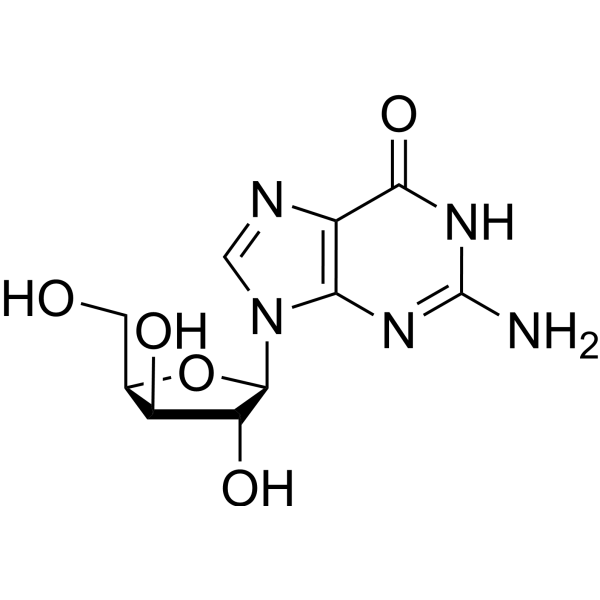6H-Purin-6-one,2-amino-1,9-dihydro-9-b-D-xylofuranosyl-
Modify Date: 2025-09-11 11:18:47

6H-Purin-6-one,2-amino-1,9-dihydro-9-b-D-xylofuranosyl- structure
|
Common Name | 6H-Purin-6-one,2-amino-1,9-dihydro-9-b-D-xylofuranosyl- | ||
|---|---|---|---|---|
| CAS Number | 27462-39-1 | Molecular Weight | 283.24 | |
| Density | N/A | Boiling Point | N/A | |
| Molecular Formula | C10H13N5O5 | Melting Point | N/A | |
| MSDS | N/A | Flash Point | N/A | |
Use of 6H-Purin-6-one,2-amino-1,9-dihydro-9-b-D-xylofuranosyl-9-(β-D-Xylofuranosyl)guanine is a guanosine analog. Some guanosine analogs have immunostimulatory activity. In some animal models, they also induce type I interferons, producing antiviral effects. Studies have shown that the functional activity of guanosine analogs is dependent on the activation of Toll-like receptor 7 (TLR7)[1]. |
| Name | 6H-Purin-6-one,2-amino-1,9-dihydro-9-b-D-xylofuranosyl |
|---|
| Description | 9-(β-D-Xylofuranosyl)guanine is a guanosine analog. Some guanosine analogs have immunostimulatory activity. In some animal models, they also induce type I interferons, producing antiviral effects. Studies have shown that the functional activity of guanosine analogs is dependent on the activation of Toll-like receptor 7 (TLR7)[1]. |
|---|---|
| Related Catalog | |
| References |
| Molecular Formula | C10H13N5O5 |
|---|---|
| Molecular Weight | 283.24 |
| Exact Mass | 283.09200 |
| PSA | 159.51000 |
CHEMICAL IDENTIFICATION
HEALTH HAZARD DATAACUTE TOXICITY DATA
|